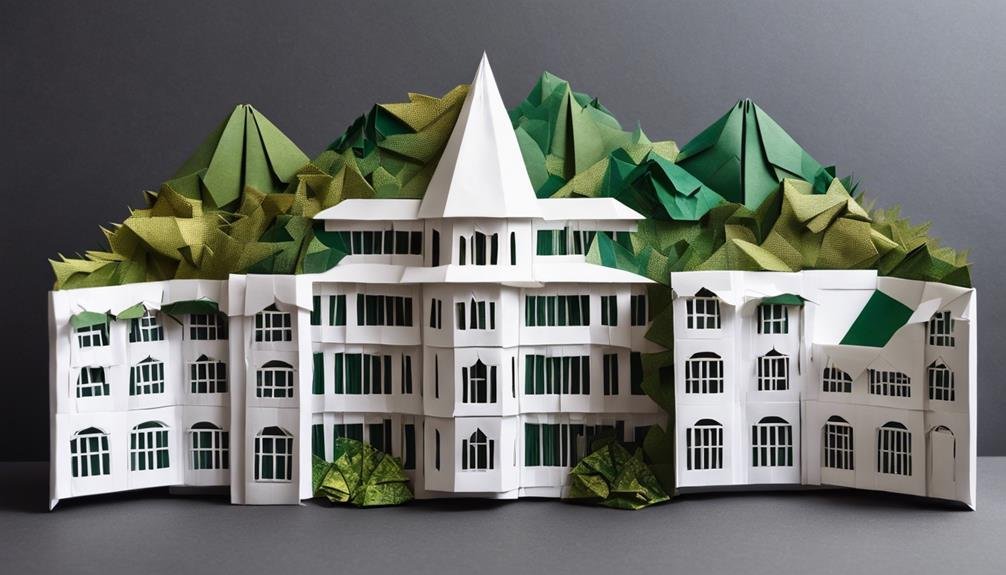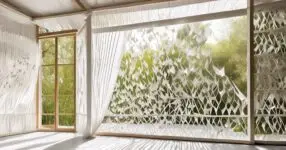The pros of painting your house white are it reflects sunlight, reducing cooling costs, and enhances natural light inside. Additionally, it makes spaces appear larger, offering an aesthetic of cleanliness and expansion.
The cons of painting your house white are it shows dirt and grime more easily, requiring frequent cleaning. Also, it may need more regular repainting compared to darker shades, increasing maintenance efforts and costs.
Takeaways:
- White exteriors boost curb appeal with a classic look that highlights architectural details.
- Reflective properties of white paint aid in temperature control, potentially lowering cooling costs.
- High visibility of dirt and stains on white exteriors necessitates frequent cleaning and maintenance.
- A timeless white aesthetic can enhance property resale value by appealing to energy efficiency and design preferences.
| Pros of White Exterior House | Cons of White Exterior House |
|---|---|
| Enhances Curb Appeal | High Maintenance |
| Reflects Sunlight Reducing Cooling Costs | Shows Imperfections Easily |
| Versatile Color Matching | Requires Frequent Repainting |
| Makes Spaces Appear Larger | Can Seem Stark or Unwelcoming |
| Improves Visibility | Dirt and Grime Visibility |
| Boosts Resale Value | Can Blend in Snowy Climates |
| Timeless Aesthetic | Potential for Glare |
| Enhances Natural Light | May Not Suit All Architectural Styles |
| Creates a Positive First Impression | Environmental Considerations |
| Highlights Landscaping and Features | Heat Retention Concerns |
Pros of White Exterior House
- Enhances Curb Appeal: A white exterior offers a timeless elegance that enhances a home’s curb appeal. It stands out in a neighborhood, offering a clean and refined look that is visually appealing. This color choice can accentuate the architectural features of a home, making it more attractive to onlookers and potential buyers.
- Reflects Sunlight Reducing Cooling Costs: The reflective quality of white paint helps in deflecting sunlight, which in turn can reduce cooling costs during warmer months. This energy-efficient benefit can lead to significant savings on electricity bills, making white an eco-friendly and cost-effective color choice for homeowners.
- Versatile Color Matching: White is an exceptionally versatile color that can match with almost any accent color, landscaping, or exterior decoration. This makes it easier for homeowners to update their exterior look without having to change the main color of their home, providing flexibility in design and decor choices.
- Makes Spaces Appear Larger: White exteriors can make homes appear larger and more inviting. The brightness of white helps in creating an illusion of space, making the house stand out even from a distance. This can be particularly beneficial for smaller homes, giving them a more prominent appearance in the landscape.
- Improves Visibility: Homes painted white are easier to see at night and from a distance, improving visibility for both residents and visitors. This can enhance safety, making the house stand out in areas with poor lighting or during adverse weather conditions.
- Boosts Resale Value: White is a universally appealing color that can boost a home’s resale value. It’s a safe and popular choice among potential buyers, who might be attracted to its clean look and the feeling of newness it brings, potentially making the home sell faster.
- Timeless Aesthetic: White exteriors offer a timeless aesthetic that rarely goes out of style. Unlike trendy colors that might fall out of favor, white remains a classic choice that can withstand the test of time, ensuring the home always maintains a contemporary and stylish appearance.
- Enhances Natural Light: White exteriors reflect more natural light into the home, enhancing indoor lighting conditions. This can create a brighter and more welcoming interior environment, reducing the need for artificial lighting during the day.
- Creates a Positive First Impression: A white exterior can create a positive first impression, signaling cleanliness and meticulous upkeep to visitors or potential buyers. This can be particularly advantageous when trying to sell the home, as it helps in establishing an appealing visual from the outset.
- Highlights Landscaping and Features: White acts as a perfect backdrop for landscaping and other outdoor features, making colors pop and architectural details more pronounced. This can enhance the overall aesthetic of the property, making it more appealing and enjoyable.
Cons of White Exterior House
- High Maintenance: Keeping a white exterior clean and pristine requires frequent cleaning and maintenance. Dust, dirt, and stains are more visible on white surfaces, necessitating more regular upkeep efforts to maintain its fresh appearance.
- Shows Imperfections Easily: Any imperfections such as cracks, chips, or uneven surfaces are more visible on a white exterior. This can lead to more frequent repairs and maintenance to keep the facade looking perfect, adding to the upkeep costs.
- Requires Frequent Repainting: White exteriors can show signs of wear, yellowing, and fading more quickly than darker colors due to sun exposure and environmental factors. This may require more frequent repainting or touch-ups to maintain its bright appearance.
- Can Seem Stark or Unwelcoming: In certain environments or architectural contexts, a white exterior can appear too stark or unwelcoming. Without the right landscaping or architectural details, it might lack warmth or character, making the home feel less inviting.
- Dirt and Grime Visibility: White exteriors can make dirt, grime, and even mildew more visible, especially after rainstorms or in areas with high pollution. This visibility can detract from the home’s aesthetic appeal, requiring more frequent cleaning.
- Can Blend in Snowy Climates: In regions with heavy snowfall, a white house can blend into the landscape, losing its distinctiveness. This lack of contrast can make the home appear monotonous and can even pose safety issues in terms of visibility.
- Potential for Glare: In very sunny locations, the reflective nature of a white exterior can lead to glare, which can be uncomfortable for both the inhabitants and their neighbors. This glare can also affect the usability of outdoor spaces during peak sunlight hours.
- May Not Suit All Architectural Styles: While white is versatile, it may not complement every architectural style or historical period. Some homes might benefit more from colors that highlight their architectural heritage or unique features.
- Environmental Considerations: In areas prone to mud, dust, or heavy rainfall, a white exterior can become soiled more quickly, requiring more intensive environmental management and cleaning efforts to keep it looking its best.
- Heat Retention Concerns: Despite its reflective properties, a white exterior can still retain heat in the materials underneath the paint, which might not make it the most effective color for all climates, especially where keeping a home cool is a priority.
Aesthetic Appeal
White exterior house paint has been popular for several years and is loved for its versatility, timelessness, and aesthetic appeal. Here are some reasons why a white exterior can enhance the aesthetic appeal of your home:
- Timeless Elegance: White is a classic and timeless color that can give a home a sophisticated and elegant look.
- Versatility: White can complement a wide range of architectural styles and can be paired with different accent colors and materials to create a variety of looks.
- Brightness: A white exterior can make a home appear brighter and more welcoming, especially when paired with natural light and large windows.
- Curb Appeal: A white exterior can enhance the overall curb appeal of a home, making it more attractive to potential buyers.
You can make your home uniquely yours by going with a white paint that you love and pairing it with dark trim around the windows, a pop of color on the front door, and a dark roof to bring it all together. So don’t be afraid of going white on the exterior of your home.
In terms of trim paint colors for a white painted house, black is a popular option that can create a bold and striking contrast against a white exterior and give it a modern and sophisticated look.
Overall, a white painted house can be a versatile and elegant option for a home’s exterior, with a variety of benefits that can enhance both its aesthetic appeal and practical functionality.
Sources:
- Best White Home Exterior Ideas to Up Your Curb Appeal – A Blissful Nest.
- 21 fresh white house exterior ideas – Homes To Love.
- 8 Best Exterior Paint Colors For Your Home – backyardboss.net.
- 42 Exterior Color Schemes for Every Architectural Style.
Temperature Control
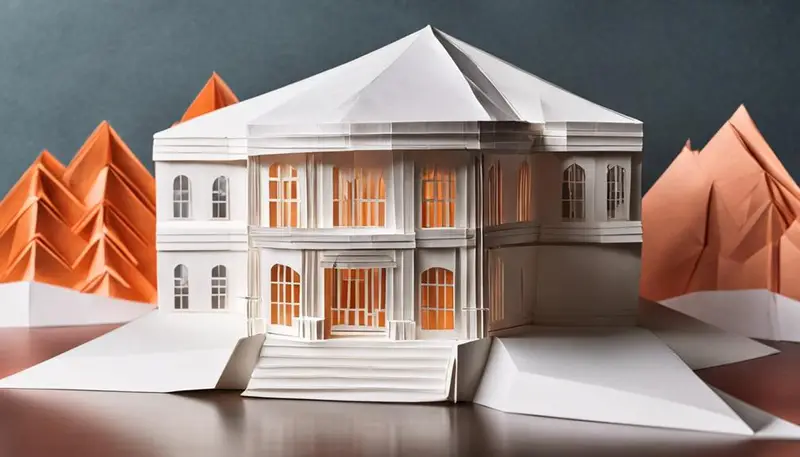
Beyond aesthetic appeal, white exterior houses offer significant advantages in temperature control, particularly in warmer climates where reducing heat absorption is crucial for maintaining interior comfort. The inherent properties of white surfaces to reflect more light and heat directly contribute to a cooler interior environment, making them an excellent choice for regions that experience intense sunlight and high temperatures. This high albedo effect of white exteriors significantly reduces heat absorption, enhancing the energy efficiency of the home.
Furthermore, the strategic use of white can lead to considerable savings on cooling costs by minimizing heat gain through the walls. This is especially beneficial in sunny areas, where the relentless sun can lead to increased reliance on air conditioning systems. By reflecting a substantial portion of the sun’s rays, white houses inherently keep the interior cooler and reduce the energy required for cooling.
Incorporating accents of color can also complement the temperature control benefits of white exteriors, adding aesthetic warmth while maintaining efficiency. However, it’s equally important to consider insulation alongside color choice. Optimal insulation enhances the temperature-regulating properties of white exteriors, ensuring that the benefits extend beyond mere reflection of sunlight, towards achieving maximal energy efficiency and comfort within the home.
Maintenance Demands

Turning our attention to the maintenance demands of white exterior houses, it’s important to recognize the challenges and requirements for upkeep.
Frequent cleaning is necessary to combat dirt accumulation and staining, which are more visible against a white backdrop.
Additionally, considerations around the durability of paint and the visibility of weathering effects play a critical role in the ongoing maintenance of these properties.
Frequent Cleaning Required
One significant drawback of opting for a white exterior house is the high maintenance requirement, necessitating frequent cleaning to combat visible dirt, grime, and stains. The pristine appearance of a white facade is highly susceptible to discoloration and yellowing, factors that underline the need for regular and meticulous upkeep.
This maintenance demands not only time but also a consistent effort to preserve the house’s aesthetic appeal. Cleaning such exteriors can prove to be a time-consuming chore, requiring more frequent attention compared to houses with darker exteriors. The visibility of dirt and stains on white surfaces means that homeowners must commit to a rigorous maintenance schedule, making the need for consistent cleaning and maintenance a key consideration for anyone contemplating a white exterior for their home.
Weathering Visibility Issues
White exteriors present unique challenges due to their high visibility and susceptibility to discoloration and dirt accumulation. Regular maintenance, including frequent cleaning and repainting, is essential to preserve their pristine appearance. Homeowners must remain vigilant in caring for white finishes to prevent yellowing and staining, which can diminish the aesthetic appeal of their homes. Timely attention to these issues is crucial to ensure that white exteriors maintain their striking beauty over time.
Maintaining white exteriors involves more than just routine cleaning; it requires a proactive approach to address weathering and visibility issues. Regular upkeep is necessary to keep these surfaces looking fresh and appealing, as dirt and grime are especially noticeable on white finishes. By staying on top of cleaning and maintenance tasks, homeowners can ensure that their white exteriors continue to enhance the overall appearance of their homes.
Durability Concerns
The maintenance demands for houses with white exteriors are significantly higher due to their susceptibility to showing dirt, stains, and scuffs more readily than darker counterparts. This visibility issue necessitates a proactive approach to upkeep to ensure the home retains its aesthetic appeal.
- Frequent Cleaning: Regular washing is essential to remove visible dirt and prevent permanent staining.
- Periodic Repainting: To combat discoloration and wear, white exteriors may require repainting more often than homes with darker colors.
- Quality Materials: Choosing high-quality, durable paint and materials can reduce how often maintenance tasks need to be performed, though upfront costs may be higher.
These steps are crucial for homeowners to maintain the pristine appearance of a white exterior house, despite the increased maintenance demands.
Stain Visibility
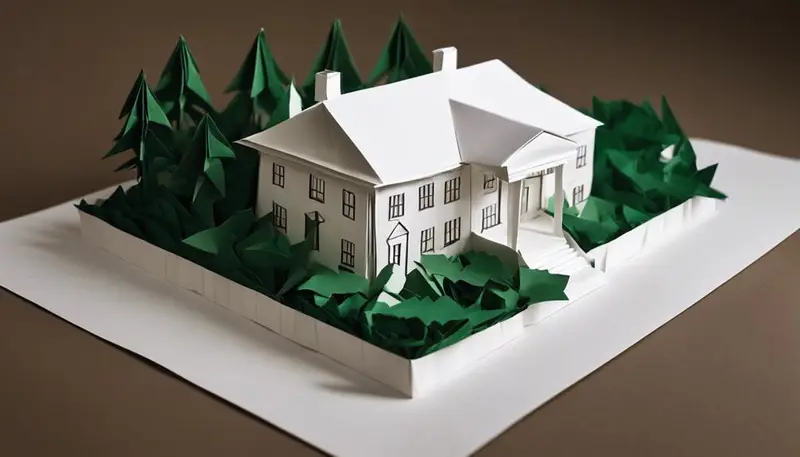
The visibility of stains on white exterior houses significantly affects both the maintenance routine and the aesthetic value of the property. Increased cleaning frequency is necessary to combat the evident marks of weathering, including water spots, mold, and mildew.
Furthermore, considering the impact of weather conditions is crucial for preserving the aesthetic appeal and ensuring the longevity of the paintwork.
Increased Cleaning Frequency
Maintaining a pristine appearance for houses with white exteriors necessitates more frequent cleaning efforts due to the heightened visibility of stains and dirt. The stark contrast between the white surface and any form of discoloration means that even minor stains or dirt become readily apparent, demanding immediate attention. This increased need for upkeep is often seen as a significant drawback for homeowners who prefer low-maintenance properties.
- Visibility of Stains: White exteriors show stains and marks more noticeably, requiring regular cleaning to maintain an immaculate appearance.
- Perception of Maintenance: The ease with which dirt shows on white paint can lead to a perception of a high-maintenance home.
- Cleaning Frequency: The necessity for more frequent cleaning is a notable downside, impacting both time and financial resources for homeowners.
Weather Impact Consideration
While considering the heightened cleaning needs of white exteriors due to visible stains and dirt, it is also essential to understand how various weather conditions exacerbate these challenges. Rain, pollution, and environmental debris significantly impact white surfaces, making regular maintenance a necessity for homeowners.
High humidity and areas prone to mold growth or heavy precipitation can increase the risk of stain visibility, requiring more frequent upkeep. Moreover, direct sunlight exposure, wind-blown debris, and moisture contribute to the deterioration of a white exterior’s pristine appearance over time.
Recognizing the influence of weather elements on stain visibility is crucial for those aiming to maintain the aesthetic appeal of a white exterior house, emphasizing the importance of proactive and preventive care strategies.
Aesthetic Appeal Maintenance
How does one ensure the enduring beauty of a white exterior house, given its susceptibility to stain visibility and the consequent need for meticulous maintenance? The timeless aesthetic appeal of white houses enhances curb appeal and architectural details but comes with the challenge of keeping the facade immaculate. Stain visibility is a significant concern, as any discoloration is prominently visible against the pristine backdrop, necessitating regular upkeep to maintain the bright and clean appearance.
- Regular Cleaning: To counteract the visibility of dirt, stains, and scuffs, frequent washing of the exterior is essential.
- Frequent Repainting: Environmental factors can mar the surface, requiring periodic repainting to preserve the white’s vibrancy.
- Protective Coatings: Applying protective finishes can help minimize stain absorption and extend the intervals between major maintenance activities.
Color Options
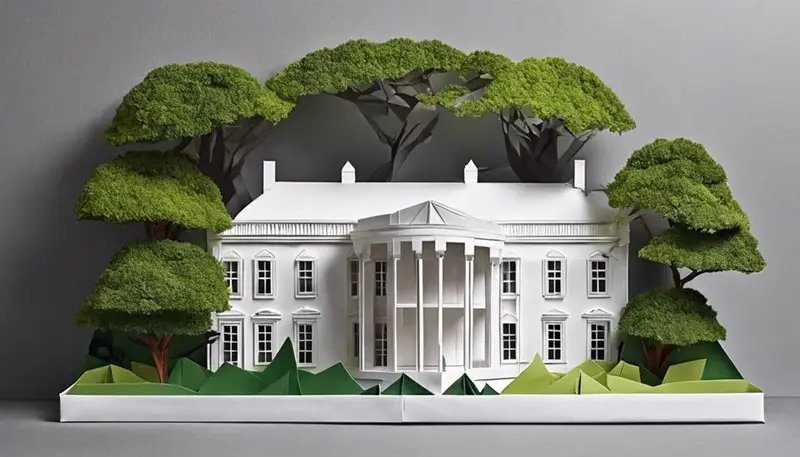
Selecting the right color scheme for a white exterior house offers the opportunity to enhance its classic appeal and highlight architectural features. White exteriors have long been favored for their timeless aesthetic, capable of bringing out the best in various architectural designs. The choice of white shade plays a crucial role in achieving the desired effect. Soft white shades like Simply White and Snow Bound are particularly popular for creating a clean, bright look that enhances the home’s visual appeal.
Moreover, white exteriors have the advantage of enhancing natural light, which contributes to a sense of brightness and spaciousness around the property. This can make the house appear more inviting and warm, a quality that is often sought after in residential designs.
For homeowners looking to make a bold statement, incorporating accent colors like deep red or navy blue can provide a striking contrast to a white backdrop. These bold accents can draw attention to specific architectural details or elements, adding depth and character to the overall design.
However, it’s important to note that white exteriors may require more frequent cleaning and maintenance to maintain their pristine appearance. Dirt and stains are more visible against a white background, necessitating a commitment to upkeep to preserve the house’s aesthetic appeal.
Resale Value
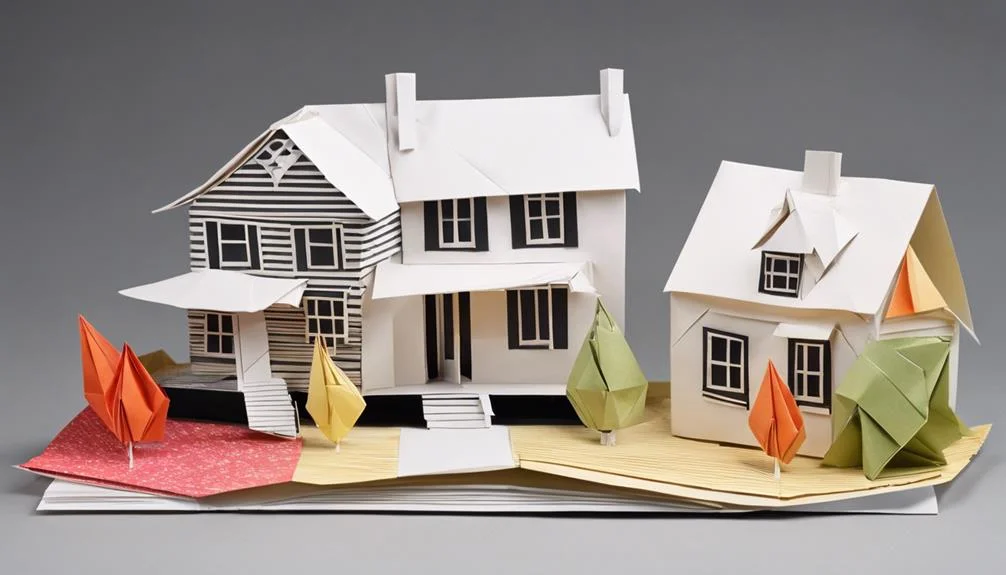
After exploring the aesthetic and practical benefits of white exteriors, it’s important to consider how this choice impacts resale value. The influence of a home’s exterior color on its marketability cannot be overstated, with white exteriors playing a pivotal role in enhancing a property’s appeal to potential buyers. This impact on resale value can be broken down into three key points:
- Timeless Appeal: White exteriors have a timeless quality that transcends fleeting design trends, making them a safe and appealing choice for a wide array of buyers. This universal appeal can contribute to maintaining or increasing a home’s market value over time.
- Positive First Impressions: A white exterior conveys a sense of cleanliness, maintenance, and classic elegance. This creates a strong first impression that can captivate potential buyers before they even step inside, potentially leading to faster sales and higher offers.
- Versatility and Perceived Space: The versatility of white allows it to complement various architectural styles, enhancing the property’s attractiveness. Additionally, the bright and airy feel can make a home appear larger, further increasing its desirability and perceived value in the competitive real estate market.
Environmental Considerations

Considering the environmental impact, white exterior house paint plays a significant role in enhancing a home’s energy efficiency by reflecting more sunlight. This reflection reduces the amount of heat absorbed by the building, thereby contributing significantly to energy conservation. In regions experiencing high temperatures, this characteristic of white exteriors can be particularly beneficial, helping to lower cooling costs and reduce energy consumption.
Furthermore, white exteriors can mitigate the urban heat island effect, a phenomenon where urban regions become significantly warmer than their rural counterparts due to human activities. By keeping the house cooler, white paint helps in creating a more comfortable living environment without the excessive use of air conditioning systems. This not only saves energy but also reduces greenhouse gas emissions associated with electricity production.
Additionally, the reflective property of white paint may contribute to less frequent repainting needs. Since it effectively reflects sunlight, it can prevent premature degradation of the exterior surface, making white a sustainable choice for homeowners. This is especially true for homes in tropical climates where the sun’s impact is more pronounced. Opting for white exteriors, therefore, offers an environmentally friendly option that combines aesthetic appeal with substantial energy-saving benefits.
Conclusion
In conclusion, white exterior houses offer a timeless aesthetic appeal, enhancing architectural details and creating a sense of spaciousness.
However, these benefits come with considerations such as increased maintenance demands due to higher visibility of stains and the necessity for regular cleaning to maintain their pristine appearance.
Moreover, selecting the appropriate shade of white and considering its environmental impact are essential. Despite these challenges, the positive effects on a property’s resale value and the psychological benefits of brightness cannot be overlooked.
